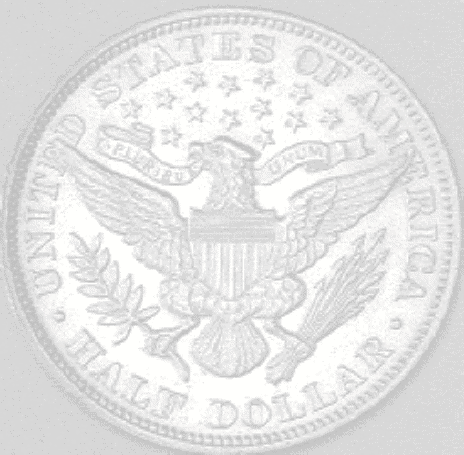
|
|
||
|
|
|
|
|
|
||

-63-
FOR BETTER OR WORSE:
The Thomas Amendment
On May 12, 1933 Congress passed the Agricultural Adjustment Act. Under Title III, known as the "Thomas Amendment", it was claimed that the President of the United States was "empowered to reduce the gold content of the "dollar" by 50 percent (“Coins and Currency”, 3). As amended by Joint Resolution on June 5, 1933, it provided all coins and currencies of the United States should be "legal tender for debts, public and private, public charges, taxes, duties and dues" (“Coins and Currency”, 3). Remember the words of Rev. John Witherspoon in his Essay on Money:
Why will ye make a law to oblige men to take money . . .? Are there any who refuse it when it is good? If it is necessary to force them, does not this demonstrate that it is no good? (Lockman, 15)
The Thomas Amendment
"nationalized" domestic gold and silver, or so it was claimed (“Coins
and Currency”, 5). But, if the Amendment made gold and silver
commodities that belonged to the people of the nation, why are the
people of the nation denied access to their gold and silver by means of
a public circulation?
The Amendment purported to empower the President of the
United States to direct the mints to "purchase" newly mined domestic
silver (“Coins and Currency”, 3). Accordingly on December 21, 1933, the
President issued the first of a series of such proclamations. Thus
according to the Amendment, Congress placed a 50 percent tax on all
private sales of silver when the market "value" was 80 cents an ounce.
The Treasury agreed to "pay" 50 cents an ounce. In his book entitled
Fool's Gold Is Green, Mr. Dave Wilber exposes the fact that since
Congress fixed the dollar at 412.5 grains of silver or about 3/4 ounce
of silver, then 50 cents was equivalent to 3/8 ounce of silver. The
Treasury was "paying" 3/8 of an ounce of silver for 8/8 of an ounce of
silver. The Treasury was thus confiscating 5/8 of all the silver this
country produced (Wilber, 13).
The Gold Reserve Act
On January 30, 1934, Congress
passed the Gold Reserve Act which "vested in the United States title to
all gold coin and gold bullion held by the Federal Reserve banks." In
exchange for the gold, the Act "authorized" Gold Certificates as backing
for credits issued. All gold coin was to be withdrawn from circulation
and all gold assets were to be made into bars (“Coins and Currency”,
3,4). The President of the United States, on January 31st, set the gold
content of the "dollar" at 15 5/21 grains of gold 900 fine (“Coins and
Currency”, 4). Congress had set the standard originally at 27 grains at
916.666 fine, and had done it in order to end such arbitrary changing of
the standards of weights and measures.
Section 5 of the Gold Reserve Act declares:
No gold shall hereafter be coined, and no gold coin shall hereafter be paid out or delivered by the United States: provided, however, that coinage may continue to be executed by the mints of the United States for foreign countries in accordance with the Act of January 29, 1874 (U.S.C. title 31, sec. 367). All gold coin of the United States shall be withdrawn from circulation and, together with all other gold owned by the United States, shall be formed into bars of such weights and degrees of fineness as the Secretary of the Treasury may direct (“Coins and Currency”, 25).
Since the adoption of the gold policy of 1933-34 culminating in the Gold Reserve Act no currency may be redeemed in gold except as permitted by regulation issued by the Secretary of the Treasury with the approval of the President of the United States (“Coins and Currency”, 16). “To help restore confidence and strengthen the Banking community” (Introductory Economics, by Gordon Dawson) Congress passed the Glass-Steagall Act in 1933 creating the Federal Deposit Insurance Corporation. (Hicks, 658)
The Silver Purchase Act
The Silver Purchase Act was
passed on June 19, 1934. It increased the proportion of silver to gold
in the monetary stocks of the United States, but the ultimate objective
was to maintain 1/4 the "monetary value" of such stocks in silver
(“Coins and Currency”, 16). Acting under the "powers" given to the
President of the United States by this Act, an Executive Order was
issued on August 9, 1934 which required all silver in the continental
United States be delivered to the United States mints within 90 days.
The depositor was given 50 cents per ounce of silver. Newly mined
domestic silver was exempted. The Act was revoked on April 28, 1938, but
was a foreboding of things to come (“Coins and Currency”, 4-5).
The Thomas Amendment to the Act of May 12, 1933 was
revised on July 6, 1939. It directed the mints to deduct 50 percent of
the monetary value of silver brought to them. Under this revision, mints
could deduct 45 percent of the monetary "value" of silver received. The
mints were thereby allowed to seize 45 percent of the silver mined from
American resources (“Coins and Currency”, 10). The Act was further
revised on July 31, 1946 to allow the mints only 30 percent of
American-mined silver (“Coins and Currency”, 10).
